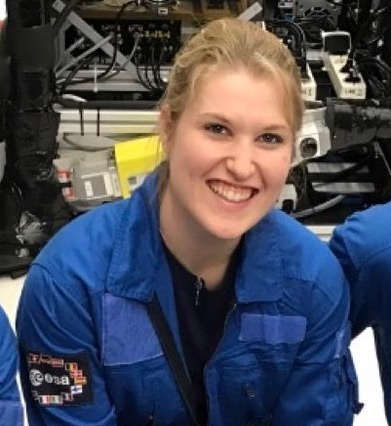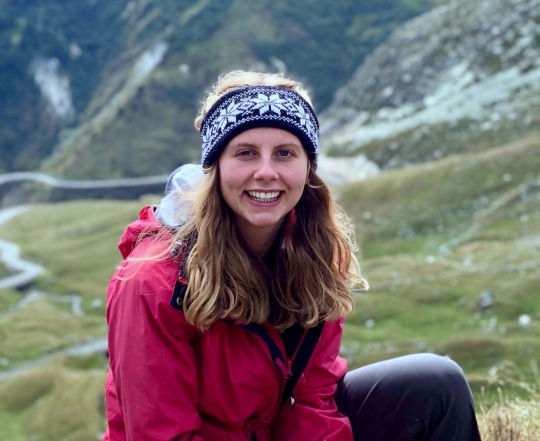#petrogenesis
Text

Petrogenesis (Brian R Williams, 2024).
(via Arch Enemy Arts, Philadelphia)
11 notes
·
View notes
Text


Geologists discover hidden magmatism on the moon
Lunar igneous activities including intrusive and extrusive magmatism, and their products contain significant information about the lunar interior and its thermal state. Their distribution is asymmetrical on the nearside and farside, reflecting the global lunar dichotomy. In addition to previously returned lunar samples all from nearside (Apollo, Luna, and Chang’e-5), samples from the South Pole-Aitken (SPA) basin on the farside have long been thought to hold the key to rebalancing the asymmetrical understandings of the Moon and disclosing the lunar dichotomy conundrum.
Earlier this year, the Chang’e-6 mission of the Chinese Lunar Exploration Program, successfully launched on May 3, landed on the lunar surface on June 2, and returned to the Earth on June 25 carrying a total of 1935.3g of lunar soils. It is the world’s first lunar farside sample-return mission, which landed in the south of the Apollo basin within the SPA basin on the farside. These precious samples would open a window to solve the long-standing question of lunar dichotomy, even reshape human’s knowledge of our closest neighbour. However, compared with the well-known mare volcanism surrounding the Chang’e-6 landing site, the intrusive magmatic activities have a much more obscure presence and origin, impeding future sample analyses when they are available for application.
In a recent research paper published in The Astrophysical Journal Letters, Dr Yuqi QIAN, Professor Joseph MICHALSKI and Professor Guochun ZHAO from the Department of Earth Sciences at The University of Hong Kong (HKU) and their domestic and international collaborators have comprehensively studied the intrusive magmatism of the Chang’e-6 landing site and its surroundings based on remote sensing data. The study revealed their extensive distributions and obscure nature with significant implications for the petrogenesis of lunar plutonic rocks and the Chang’e-6 mission, which will facilitate scientists’ further study of lunar farside.
Key Findings
The study has found that intrusive magmatism is widespread in the SPA basin. They occur in various forms including sills beneath floor-modified craters, linear and ring dikes shown by gravity data, and Mg-suite intrusions with characteristic spectral absorptions. These observations agree with the intermediate-thick crust of SPA where intrusion is favored. Landing in the SPA basin, Chang’e-6 likely collected plutonic rocks, excavated and transported by adjacent impact craters to the sampling site, that could be examined by the ongoing sample studies. They have discovered two heavily degraded floor-fractured craters (see Apollo X and Apollo Q craters in Figure 1), inspiring to identify more similar features on the Moon. All indicate that intrusive magmatism is abundant in the Chang’e-6 sampling region.
This study has traced potential plutonic materials in the Chang’e-6 samples and found that Mg-suite materials highly likely exist, primarily from the western peak ring of the Apollo basin delivered by Chaffee S crater. These Mg-rich materials contain crucial information on the origin of mysterious KREEP-poor Mg-suite rocks. Samples from both the intrusive and extrusive magmatism from the never sampled farside, especially the mysterious Mg-suite, will shed further light on solving the lunar dichotomy conundrum and a series of fundamental scientific questions relating to secondary crust building and early evolution of the Moon.
TOP IMAGE: Chang’e-6 landing site locates to the southern Apollo basin in the northeast of the South Pole-Aitken basin, lunar farside. Credit Y. Qian
LOWER IMAGE: Intrusive magmatism is extensive across the South Pole-Aitken basin, whose products highly likely collected by the Chang’e-6 mission. Credit Y. Qian
5 notes
·
View notes
Photo


Every rock that crops out of the ground is a record of the past, and so, in one way or the other it tells something about the environment in which it was formed. For example, the dark grey rock with fine and smooth texture you can see on the photo, looks that way because it formed on deep water sea bottom, where waves did not disturb the sediment that make up this rock, nor coarser sandy material was brought into it. This was a clam environment which allowed the sea-bottom animals to feed on the organic matter within the sediment (hence the dark colour) and is the reason why there are so many fossils in it, which I showed in the ‘underwater lilies’ post.
So, it is all good, and all makes sense!
But, then there are those large pieces of light grey rock (not shown, but some bigger than sedan car) with rough texture and little holes. Like you can see, its pieces are larger than anything else in a vicinity and are scattered all throughout the dark grey rock. This light grey rock does not belong to the sedimentary environment it is in, it got to where it is by other means than the sediment that surrounds it. And so, the plot thickens…
South coast NSW, Australia
#geology#rocks#environment#sedimentary#sedimentology#petrology#petrogenesis#siltstone#fossils#earth science#science#biology#chemistry#organic#natural history#nature#ancient#history#original photography#australia#story#past#knowledge#drrock
323 notes
·
View notes
Text
Untold story of Deccan Traps: Role of silicate Liquid Immiscibility by Jyotisankar Ray in MAOPS- Lupine Publishers

Role of liquid immiscibility has immense importance in petro genesis of basaltic magmas. Roedder, Weiblen [1,2] postulated that high silica and high iron glasses of the lunar basaltic rocks have widespread petro genetic significance. In lunar basalts, generally, the globules of dark brown glass appear to have composition equivalent to Pyroxene + Iron ore. On the contrary, it is significant that Washington [3] initially recognized that the residual glass in the Deccan Trap basalts should be composition corresponding to a mixture of augite and magnetite. The role of liquid immiscibility in basaltic magmas had been graphically depicted by Roedder in terms of SiO2-(FeO+MgO+CaO)-(K2O+Na2O+Al2O3) diagram; characteristically the liquid immiscibility field in Roedder's ternary plot assumes an elongated elliptical geometry relatively away from SiO2-rich corner.The compositions of terrestrial basalts like Deccan Trap [3] Palisade diabase sill etc.
https://www.lupinepublishers.com/ocean-journal/fulltext/untold-story-of-deccan-traps-role-of-silicate-liquid-immiscibility.ID.000105.php
0 notes
Text
Materials World’s top feature of 2019
As 2019 is drawing to a close, the Materials World team wanted to highlight a couple of stories to end the year on a high note. On Wednesday we shared the news story that got the most clicks on our website in 2019.
Today, we are sharing the top feature. We hope you enjoy and Merry Christmas from the editorial team.
15 UNDER 30
By: Idha Valeur
IOM3 is looking to the future and celebrating young talent and ambition. Idha Valeur talks to the ones to watch in STEM.
Kyle Saltmarsh
Age: 27
Job: Robotics Engineer at Woodside Energy.
Education: PhD Engineering in Submarine Vibration and Acoustics, BSc in Physics and Applied Mathematics, BME (Honours).
Current project: Deployment of robotic technology onto Woodside’s oil and gas plant for surveillance, and performing tasks through robot manipulation.
Achievements: Best honours thesis, several hackathon wins, top IBM 2018 graduate in Australia/New Zealand, 2018 Young Persons’ World Lecture Competition Winner, world’s largest bungee jumper, blogger and hosting a podcast to inspire people in technology.
Ultimate goal: To positively impact the world through the power of technology.

Kyle Saltmarsh Image credit: Brent Campbell
Jennie Palmer
Age: 26
Job: Research Engineer.
Education: Undertaking an EngD in Structural Metals for Gas Turbine Applications, BEng in Aerospace Engineering, with a year in industry, Swansea University.
Current project: I am researching the development of bespoke test facilities and fundamental understanding of thermo-mechanical fatigue crack growth behaviour in titanium alloys.
Achievements: Graduating with a BEng in Aerospace Engineering with First-Class Honours, presenting my research at national and international conferences, having research published in an internationally recognised journal and a Green Belt Certificate in Lean Six Sigma.
Ultimate goal: To become a well-established, technical expert in my engineering field.

Jennie Palmer Image credit: Jemima Bond
Ilija Rašović
Age: 27
Job: Lecturer at University of Birmingham
Education: MEng in Materials Science at Corpus Christi College, Oxford. DPhil in Materials at St Cross College, Oxford.
Current project: The use of fullerenes — nanometre-sized balls of carbon — in biomedical applications. One of the methods I have devised, to make them soluble in water, helps in the formation of large self-assembled structures that hold great promise as multi-modal drug delivery vehicles.
Achievements: The IOM3 international Literature Review Prize in 2016. Final of the IOM3 Young Persons’ World Lecture Competition in 2017. I joined the P1 Graphene Solutions as an advanced materials engineer and became a lecturer at the University of Birmingham. In 2019, I joined IOM3’s Younger Members’ Committee.
Ultimate goal: To make a contribution to the wide deployment of transformative nanomedicine in a clinical setting within my lifetime. My broader vision is to continue to champion materials science and make more accessible the obfuscated world of academic research.

Ilija Rašović
Amanda Field
Age: 25
Job: Development Engineer.
Education: BEng Materials Science and Technology, University of Birmingham.
Current project: Trying to finish my PhD on additive manufacturing of tungsten for nuclear fusion reactors. It’s challenging but worthwhile because the success of nuclear fusion would go a long way to solving the energy crisis. I’m working in additive manufacturing.
Achievements: I have presented my work at international conferences. I was involved with an experimental parabolic flight campaign for the European Space Agency where we used a demonstrator device to 3D print metal in zero gravity. I came second in the IOM3 Young Persons Lecture Competition.
Ultimate Goal: To keep working in additive manufacturing. I’d like to stay in R&D as you get such variety in your role and you have the potential to make significant improvements to a product or a technology, or design new ones yourself.

Amanda Field Image credit: Luke Carter
Jack Saunders
Age: 25
Job: PhD Student in Materials Chemistry.
Education: MChem with a year in industry, University of Manchester.
Undertaking a PhD in Materials Chemistry, University of Manchester, in collaboration with AkzoNobel.
Current project: To analyse the impact of different polymers on the corrosion protection afforded by emulsion paints. I aim to achieve this by synthesising and testing polymer’s corrosion performance. This is to better understand how polymer chemistry can affect the corrosion protection offered by the dried paint.
Achievements: A First Class Master’s degree in chemistry. My PhD at the School of Materials at The University of Manchester. Awarded the President’s Doctoral Scholar Award. Presented my work at conferences such as the RSC’s MacroGroup YRM, Dublin, 2018. Won the regional Young Persons’ Lecture Competition this year.
Ultimate goal: To develop my research and management skills in order to have my own research group in the field of polymer chemistry and colloid science.

Jack Saunders Image credit: University of Manchester
Megan McGregor
Age: 25
Job: PhD Candidate at the Department of Materials Science & Metallurgy, University of Cambridge.
Education: MSci in Natural Sciences, University of Cambridge, specialising in Materials Science.
Current project: A PhD project investigating a new intermetallic alloy for commercial gas turbine engines. Specifically, trying to develop a novel coating material required to attach abrasives onto the end of rotating turbine blades, in pursuit of a more efficient sealing system.
Achievements: I enjoy teaching in the department, and was recently awarded the Departmental Demonstrator Prize. I talked at the Cambridge Science Festival and the inaugural Cambridge Soapbox Science event. I will be representing the South Eastern Region in the final of the IOM3 Young Persons’ Lecture Competition this year, selected for an RCUK Public Policy Internship at the Government Office for Science in 2018, where I got to contribute to government policy.
Ultimate goal: To see the material I am working on make it into a commercial gas turbine engine. I want to take my expertise in this area into industry, and be able to contribute to the development of the hybrid-electric aircraft sector.

Megan McGregor Image credit: Andrew Jeskins
Abigail Georgia Robinson
Age: 22
Job: Geology student.
Education: MGeol in Earth and Environmental Sciences, University of St Andrews, graduating in 2020.
Current project: I will co-lead an expedition to the Lofdal Complex, Namibia, which hosts a suite of carbonatitic and silicic igneous rocks, some of which are enriched in heavy rare earth elements. I aim to integrate geological field data with geochemical and isotopic datasets to model the petrogenesis of the scientifically interesting igneous rocks.
Achievements: I was awarded the prestigious Laidlaw Scholarship in Research and Leadership in 2018. This supported my field campaign in Armenia, to investigate the interplay between climate change, hydrology and medieval irrigation systems. I did a research placement at the Scottish Universities Environmental Research Centre where I learned to code in Python and used this to statistically investigate the geographical origin of lunar meteorites across the lunar surface. This work was included in Dr Marissa Tremblay’s published abstract and presentation at the 2019 Lunar and Planetary Science Conference, USA.
Ultimate goal: I plan to embark on a PhD on the tectonically imposed planet-wide cycling of the volatile elements. I plan to be an active communicator promoting an understanding of geoscience and the global scale problems that we, the geoscientists, can work to solve.

Abigail Robinson Image credit: Evan Margerum
Federica Rosaria Lisa
Age: 24
Job: Technical Graduate at British Steel.
Education: MChem Chemistry with Forensic Science with a year in industry, University of Leicester.
Current project: A variety of research and development projects – one on understanding and reducing the factors that influence power and electrode consumption at the ladle arc furnaces in the secondary steelmaking process.
Achievements: Graduated with a First Class Honours and secured a 12-month industrial placement and a place on a graduate programme. I succeeded in my secondary school exams after moving to a new continent and starting International School.
Ultimate goal: To work for a sustainable discovery/development that will improve lives and I would like to lead a company. I would also like to promote the importance of education, support developing countries in the construction of more schools and strengthen the educational system.

Frederica Lisa Image credit: Johnny Gallagher
Daniel Everington
Age: 26
Job: Materials Technologist – Surface Engineering.
Education: MEng Aerospace Engineering with a year in industry, University of Sheffield.
Current project: Surface engineering at Rolls-Royce. I’m involved with different projects across the engine, including compressor sealing systems, hot end environmental protection and anti-seize coatings.
Achievements: Developed a novel method to flow test ceramic filters used in the investment casting process. The technique contributed to a 3% improvement in casting yield and the reduced variation helps lower the amount of metal. Patents may be filed on the work.
Ultimate goal: I’d like to work with academia to co-develop novel coatings/surface treatments. I enjoy the challenges that come with working on new technology as the answers can’t simply be found in a textbook.

Daniel Everington Image credit: Alistair Coast-Smith
Louise Gale
Age: 28
Job: Materials Engineer at Rolls-Royce Plc.
Education: MSci & MA in Natural Sciences, specialising in Materials Science, University of Cambridge.
Current project: The development of ceramic matrix composites for introduction into aerospace gas turbine engines. My responsibilities include running mechanical testing programmes, supervising work at our university partners as well as the analysis and fractography of tested samples to elucidate damage mechanisms.
Achievements: Completing the Rolls-Royce Graduate Scheme, including obtaining funding for an international placement in the Materials Testing Department in Berlin. I became Technical Lead of a £2.5mln project which was part of a government-funded programme to develop SiC/SiC ceramic matrix composites. I developed the £7mln, three-year materials development component to the follow on project that was approved in late 2017.
Ultimate goal: To become an expert on ceramic and composite materials systems.

Louise Gale Image credit: Stephen Gale
James Grant
Age: 24
Job: EngD student with TATA Steel and M2A, Materials and Manufacturing Academy.
Education: School of Physics and Astronomy, Cardiff University, College of Engineering, Swansea University.
Current project: Development of novel coating solutions for the improvement of pre/post heat treatment of carbon steel conveyance tubes. My project aims to reduce high-temperature oxidation caused by the normalising process.
Achievements: I developed a novel anodisation system for fabricating alumina masks in the molecular beam epitaxy application. In addition to this, my placement with Merck successfully optimised electrophoretic fluids to further enhance the E-ink display technology. I’ve been competing in the 2019 IOM3 Young Persons Lecture Competition. Having won the SWMA heat and the South West Regional, presenting at the national final in May.
Ultimate goal: To educate and encourage the next generation of students to take up STEM subjects. I hope I can engage and excite a younger audience about materials science and demonstrate the opportunities available in engineering.

James Grant Image credit: James Grant
Vidya Chamundeswari Narasimhan
Age: 28 years
Job: Post-doctoral Research Fellow Department of Materials Science and Engineering, NTU.
Education: PhD in Materials Engineering.
Current project: Developing responsive nasogastric tubes for the elderly and using nature-derived biopolymers for biomedical applications.
Achievements: Young Scientist Award conferred by VIWA in India, Title Winner of the IOM3 Young Persons’ World Lecture Competition 2017, Women in Engineering Travel Grant in 2018, Chair of the Young Scientists Forum at the European Materials Research Society conference in Poland 2018.
Ultimate goal: To lead and manage a diverse team, foster interdisciplinary collaboration and offer R&D support for cutting edge research in the healthcare sector. I also want to contribute significantly towards mentoring the next generation of young girls towards pursuing exciting careers in STEM fields.

Vidya Chamundeswari Image credit: Dr Rohit Satish
Frederick Cooper
Age: 28
Job: Research Engineer and PhD student.
Education: BEng with Honours, Swansea University.
Current project: Microstructural and mechanical characterisation of flow formed F1E – a novel, maraging steel.
Achievements: Used flow form to develop materials for detailed metallographic, micro-textural, and mechanical assessment. I run two small businesses, have an Associate Diploma from the National College of Music, and an Associate Fellowship of the Higher Education Academy and was appointed as a Yeoman of the Worshipful Company of Tin Plate Workers.
Ultimate goal: To complete my current project and transfer a comprehensive mechanical property database detailing static and fatigue performance to a major engineering sponsor – to enable novel component manufacture. Further, I would like to use my experience to develop a career in public engagement or education.

Frederick Cooper Image credit: Lauren Ednie Photography
Robert Hoye
Age: 28
Job: Royal Academy of Engineering Research Fellow.
Education: PhD, Cambridge University, BE(Hons).
Current project: I am looking at two areas that could accelerate the scale of photovoltaics. This makes an attractive technology for producing clean energy, especially in remote regions.
Achievements: Developed a recombination contact to couple a metal-halide perovskite top-cell with an n-type silicon bottom cell, which lead to new design rules to identify promising classes of materials that could tolerate defects, and an all-inorganic device structure that led to 80% external quantum efficiency in solar cells. This went on display in the Deutsches Hygiene-Museum in Dresden, Germany. 2018 Young Engineer of the Year Award by the Royal Academy of Engineering, which also awarded me £500,000 to start an independent group at the University of Cambridge. European Forbes 30 under 30 list.
Ultimate goal: To create new classes of defect-tolerant semiconductors that can be used as low-cost and efficient top-cells in tandem with silicon.

Robert Hoye Image credit: Zoe Chung
Matthew Wadge
Age: 24
Job: PhD Researcher.
Education: BSc(Hons) Biomedical Materials Science & PhD (ongoing), University Of Nottingham.
Current project: Exploring novel formation and ion-exchange reactions of titanate surfaces for biomedical applications.
Achievements: Achieved eight awards during my undergraduate degree including the Best Student Prize, Best Project Prize, and The Armourers and Brasiers’ Best Student Prize for achieving the highest project mark within the faculty. I have since won the Armourers and Brasiers’/TWI Best BSc/BEng Student of the Year Award, Best Oral Presentation Prize from the UK Society for Biomaterials Conference in 2018. Published my first journal paper during the first year of my PhD. I am one of the Nottingham coordinators for this year’s Pint of Science festival.
Ultimate goal: To try and improve a patient’s quality of life, from improving fixation of hip stems for improved longevity, through to antibacterial surfaces for minimising infections. I aim to continue on into academia post PhD to share my experiences, and hopefully train the next generation of bioengineers and biomaterial scientists.

Matthew Wadge Image credit: Matthew James
#engineering#materials science#innovation#15 under 30#top#science#STEM#research#young#professionals#iom3
40 notes
·
View notes
Text
28 Igneous Rocks: General Overview, Classification, & Basics of Magma Terms
28 Igneous Rocks: General Overview, Classification, & Basics of Magma Terms
Igneous Rocks are formed by the solidification of magma below or above the surface.
it's getting exciting hurry up & check out for more exciting Articles.
Introduction:
Igneous Rocks are formed by the solidification of magma below or above the surface. This is a branch of geology that deals with the study of rocks and include:
a). Petrogenesis:
It denotes the origin and modes of occurrence, as well as the natural history of rocks.
Credit:…

View On WordPress
1 note
·
View note
Photo

Petrology is the branch of geological science that studies rocks and conditions under which they form. It deals with studying composition, texture, structure, occurrence & distribution and the origin of rocks in relation to physiochemical conditions and geologic processes. Petrogenesis/ Petrogeny is the branch of petrology which deals with origin and formation of rocks. . . . #agriculture #agriculturestudent #agricultureglobal #agriculturefacts #science #scienceexperiments #geology #geologyrocks #rocks #study #soilhealth #soilscience #petrology #worldwide #global #nature #naturalbeauty #naturalphotography #india (at Haryana) https://www.instagram.com/p/CErlYSiHX84/?igshid=1fleqzt00aqf0
#agriculture#agriculturestudent#agricultureglobal#agriculturefacts#science#scienceexperiments#geology#geologyrocks#rocks#study#soilhealth#soilscience#petrology#worldwide#global#nature#naturalbeauty#naturalphotography#india
0 notes
Photo

A new interpretation of petrogenesis of the early continental crust rock
The ancient continental crust in the earth was mainly formed in the Archean, 2.5~4.0 billion years ago, and is chiefly composed of tonalite, trondhjemite and granodiorite (TTG rocks). These three kinds of rock preserve pivotal information of the formation and evolution of early continental crust.
Study on the petrogenesis of TTG rocks can provide great contributions to elucidate the tectonic regimes of the early earth. A latest research, using quantitative phase modeling approach to document the partial melting process of tonalitic gneiss, presents an innovative viewpoint of petrogenesis of Archean trondhjemite in the Eastern Hebei, China.
Research paper titled: "Petrogenetic simulation of the Archean trondhjemite from Eastern Hebei China", is published in Science China Earth Sciences. The corresponding author is Professor Wei Chunjing, School of Earth and Space Sciences, Peking University.
Read more ~ TerraDaily
Image: Hadean Eon Earth
Credit: Simone Marchi
6 notes
·
View notes
Photo

From “Volcanismo calcoalcalino durante el Mioceno Medio en Patagonia Central (47°S): petrogénesis e implicaciones en la dinámica de placas” [Middle Miocene calc-alkaline volcanism in Central Patagonia (47°S): petrogenesis and implications for slab dynamics], Espinoza et al., 2010.
33 notes
·
View notes
Video
issuu
Zircon U–Pb Geochronology, Geochemistry, petrogenesis and tectonic significance of the Boroon Igneou
1 note
·
View note
Text
Geochemistry of diverse lava types from the Lau Basin (South West Pacific): Implications for complex back-arc mantle dynamics
Lavas from back-arc basins are generally diverse, and their geochemical compositions indicate that they received variable contributions from subduction components during petrogenesis. Obtaining comprehensive geochemistry characteristics for the entir https://www.environmentguru.com/pages/elements/element.aspx?utm_source=dlvr.it&utm_medium=tumblr&id=8809699
0 notes
Link
Abstract: The lunar magnesian-suite, or Mg-suite, is a series of ancient plutonic rocks from the lunar crust with ages and compositions indicating that they represent crust-building magmatism occurring immediately after the end of magma ocean crystallization. Samples of the Mg-suite were found at every Apollo landing site except 11 and ubiquitously have geochemical characteristics indicating the involvement of KREEP in their petrogenesis. This observation has led to the suggestion that the presence of ...
from New NASA STI https://go.nasa.gov/2IzX0sq
0 notes
Text
A new interpretation of petrogenesis of Earth's early continental crust
The Earth's continental crust was mainly formed in the Archean period, ~2.5 to 4.0 billion years ago, and is chiefly composed of tonalite, trondhjemite and granodiorite (TTG rocks). These three kinds of rock preserve pivotal information of the formation and evolution of early continental crust. Study on the petrogenesis of TTG rocks can elucidate the tectonic regimes of the early Earth. A recent study using a quantitative phase modeling approach to document the partial melting process of tonalitic gneiss presents an innovative viewpoint of petrogenesis of Archean trondhjemite in the Eastern Hebei, China. http://dlvr.it/P277sn
0 notes
Photo

7.11.2016 That moment when your BF asks if you have some pens...and he accepts to use really fancy colors 😍 the best part of this is that he said: "you know...I'm going to do pretty notes for tomorrow's class"...this makes me love him even more ❤️️
#study notes#studying#studyspiration#geology#petrogenesis#sedimentology#student#perfectionist#true love#stationery
1 note
·
View note
Text
Petrogenesis of basalt from the middle Okinawa Trough: New insights from olivine-hosted melt inclusions
Silicate melt inclusions (SMIs) in basalt from the middle Okinawa Trough are investigated in detail to understand the source geochemical characteristics and petrogenesis of the basalt. The middle Okinawa Trough basalts contain abundant SMIs within ol https://www.environmentguru.com/pages/elements/element.aspx?utm_source=dlvr.it&utm_medium=tumblr&id=8789680
0 notes
Text
Geochemical characterization, petrogenesis, and emplacement tectonics of Paleoproterozoic high-Ti and low-Ti mafic intrusive rocks from the western Arunachal Himalaya, northeastern India and their possible relation to the ~1.9 Ga LIP event of the Indian
Geochemical characterization, petrogenesis, and emplacement tectonics of Paleoproterozoic high-Ti and low-Ti mafic intrusive rocks from the western Arunachal Himalaya, northeastern India and their possible relation to the ~1.9 Ga LIP event of the Ind https://www.environmentguru.com/pages/elements/element.aspx?utm_source=dlvr.it&utm_medium=tumblr&id=7263744
0 notes